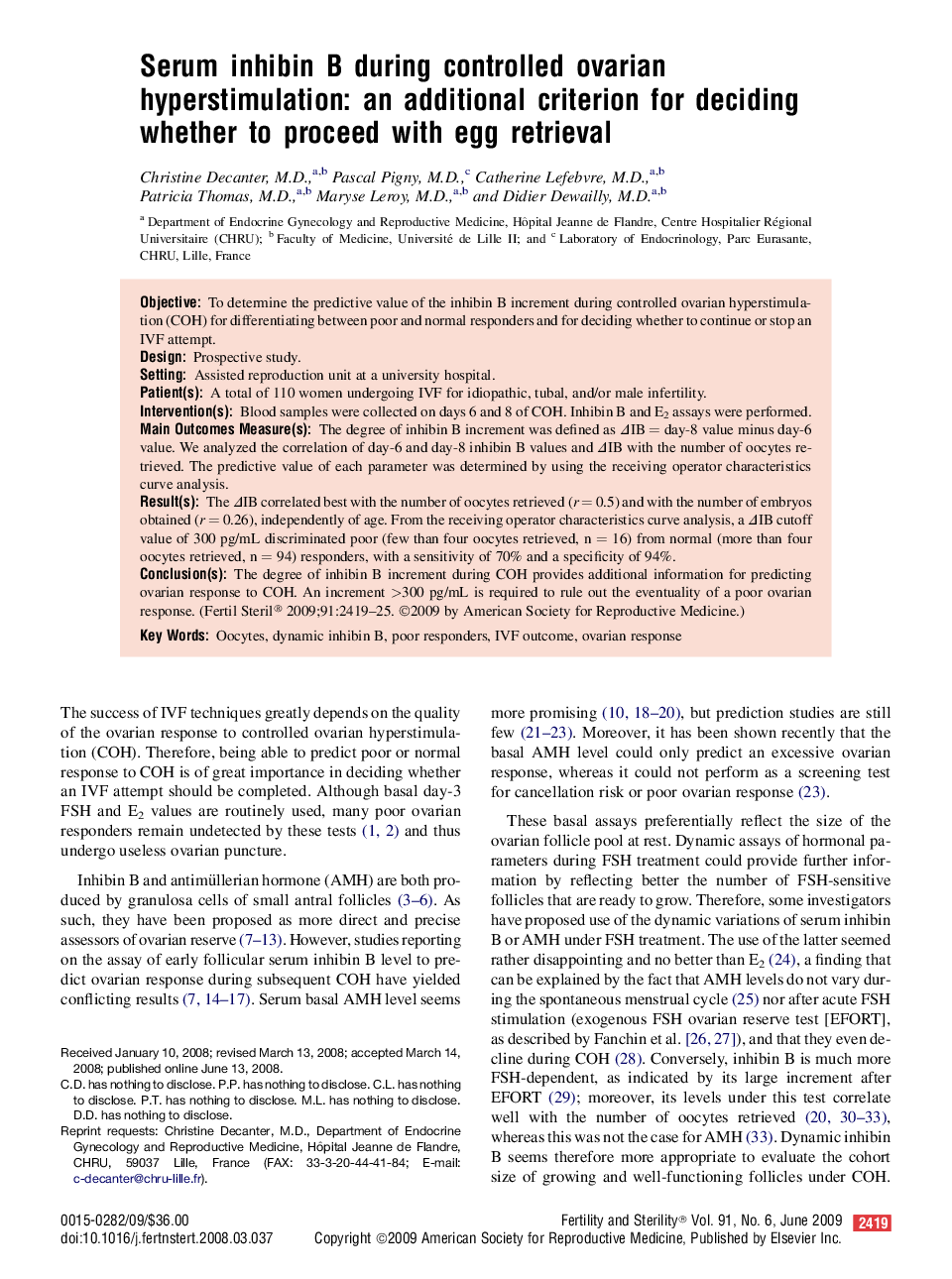| Article ID | Journal | Published Year | Pages | File Type |
|---|---|---|---|---|
| 3934253 | Fertility and Sterility | 2009 | 7 Pages |
ObjectiveTo determine the predictive value of the inhibin B increment during controlled ovarian hyperstimulation (COH) for differentiating between poor and normal responders and for deciding whether to continue or stop an IVF attempt.DesignProspective study.SettingAssisted reproduction unit at a university hospital.Patient(s)A total of 110 women undergoing IVF for idiopathic, tubal, and/or male infertility.Intervention(s)Blood samples were collected on days 6 and 8 of COH. Inhibin B and E2 assays were performed.Main Outcomes Measure(s)The degree of inhibin B increment was defined as ΔIB = day-8 value minus day-6 value. We analyzed the correlation of day-6 and day-8 inhibin B values and ΔIB with the number of oocytes retrieved. The predictive value of each parameter was determined by using the receiving operator characteristics curve analysis.Result(s)The ΔIB correlated best with the number of oocytes retrieved (r = 0.5) and with the number of embryos obtained (r = 0.26), independently of age. From the receiving operator characteristics curve analysis, a ΔIB cutoff value of 300 pg/mL discriminated poor (few than four oocytes retrieved, n = 16) from normal (more than four oocytes retrieved, n = 94) responders, with a sensitivity of 70% and a specificity of 94%.Conclusion(s)The degree of inhibin B increment during COH provides additional information for predicting ovarian response to COH. An increment >300 pg/mL is required to rule out the eventuality of a poor ovarian response.
